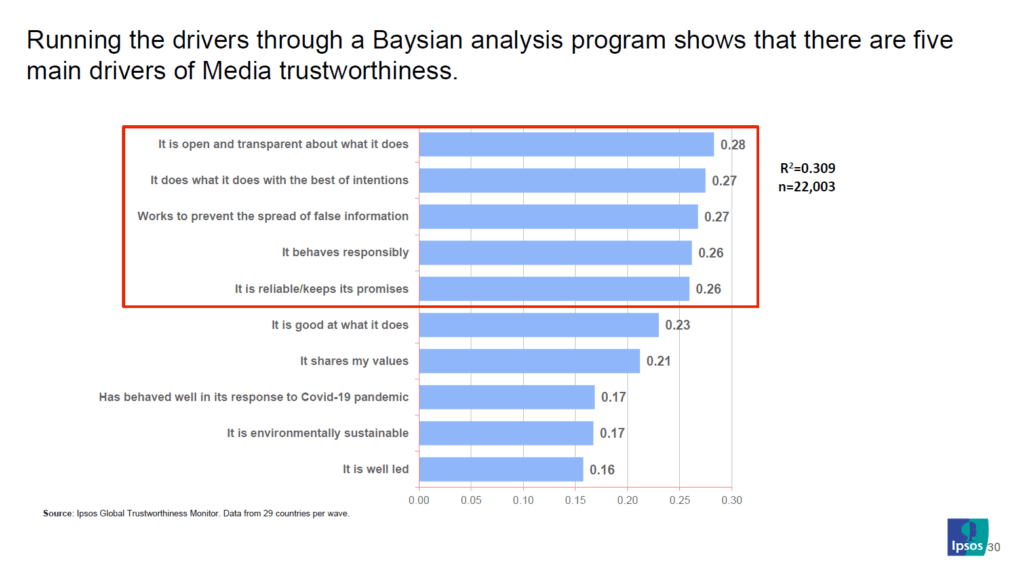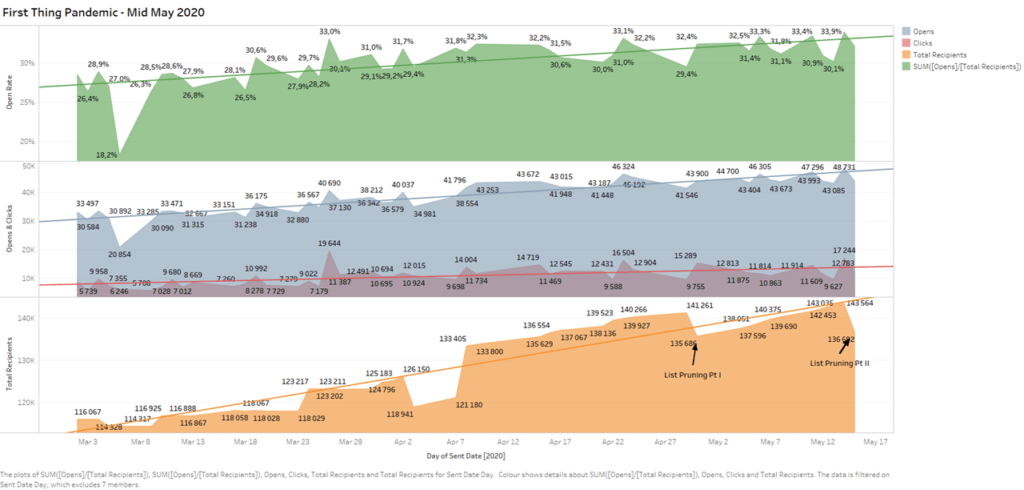Trust in the media – providing reliable information through a crisis
By John Stupart
The coronavirus pandemic brought enormous challenges to traditional news reporting, but also offered a significant opportunity for media houses to build and capitalise on the trust of readers. Based on the evidence set out below, I argue that the consistency with which truthful information was delivered to the public during a crisis helped determine trust in news organisations in South Africa during the pandemic.
Set out below, I argue that the effect of behaviour during crises on trust in media of crises can be attributed to three major factors. First, the sweeping restrictions placed on South Africans through the declaration of a state of disaster created an increased need among the public for an accurate and truthful picture of the outside world as it related to their lives. Second, the manner in which official organisations, i.e. government and affiliated structures, conducted themselves during this period showed the public this was something they could not always rely on officials to provide. Third, the ability of media to consistently provide this sort of truthful, useful information the public needed amidst the barrage of disinformation and dishonesty from officials became a significant factor driving trust in the media. Investigations exposing government corruption relating to Covid-19 from the Health Minister down, for example, correlated with a permanent uptick in readership at Daily Maverick.
These drivers of trust correlate with the drivers of trust identified in the Reuters Institute for the Study of Journalism’s study of trust in media in South Africa and other countries over the first year of the pandemic. And they correlate with the five factors identified in the Ipsos Global Trustworthiness Monitor, below, as significant drivers of trust in media worldwide.

The announcement by President Ramaphosa of a Level 5 lockdown in late March 2020 placed heavy restrictions on ordinary civilians. Without an essential workers permit, citizens were restricted to staying at home, indoors, unless seeking essential groceries or medical care. Figure 2, below, above illustrates Daily Maverick’s spike in daily users on the days restrictions were announced, showing how these events drove audience. The figure of users virtually doubled overnight and stayed on Daily Maverick to read the content thereafter. Indeed, traffic remained at this near-doubled rate or higher as shown in the second image below: Figure 3.


A key driver of this was the evolution of trust in Daily Maverick as a disseminator of important information. Having broken the ‘Guptaleaks’ story in years previous, the organisation had a reputation for hard-hitting investigations. During the pandemic, this meant, I would argue, that readers would return to read information that was perceived as important and, primarily, trustworthy. The latter is an important factor, as I believe a simple high appetite for news during the coronavirus would not adequately explain how user daily traffic remains higher than it was in March 2020 to this day.
This is perhaps best-represented by the increase in newsletter subscribers at Daily Maverick over the pandemic’s first months. As trust in media generally is well-represented in newsletters, so too did this dependence increase:

Put simply, the heavy restrictions on physical mobility during the early levels of lockdown, which spanned most of 2020, drove readers to read relevant pandemic-related news, and then media that showed their information to be reliable retained their readership both on the digital home page as well as newsletters, as trust was grown over the ensuing weeks and months to come.
Becoming the go-to source of ‘truth’ in crisis
Throughout the pandemic, investigations by independent media exposed a raft of corruption-related activities relating to pandemic funding, implicating even the health minister. The result was an atmosphere of trust in the free media as a driver of transparency – if not necessarily justice – in a government that appeared dead set to sabotage itself during the country’s hour of need.
This is a global pattern of behaviour, observed by the Guardian in terms of driving membership contributions, our course heard. The ability to remain a free press, while publishing investigative journalism that holds corrupt forces up to scrutiny is a significant motivator for signing up as Guardian supporters, the paper’s Executive Editor Mark Rice-Oxley said. In Daily Maverick’s membership model, the same can be observed.. As seen in Figure 2 above, the spikes in traffic were followed by a renewed upward growth in readership. The consistency in publishing accurate, useful information to readers allowed for easier retention of repeat readers. Indeed, as Daily Maverick’s reader base grew, so too did its paid membership base.
The growth of paying insiders who gained no extra benefit to their news reading other than a virtual pat on the back was arguably the most literal translation of reader trust into monetary value. Without trust, no reasonable reader would invest a monthly fee into a freely-accessible news publication. It is important to stress, however, that this rise in paying membership at one organisation does not denote a rise in trust – during crisis – of all journalistic sources in South Africa. As noted by Michael Schudson, “For many people, “there’s ‘the media’ (bad) and there’s ‘my media’ (fairly good).” Likewise, he noted, people have little faith in (the US) Congress but think their own local representatives are okay.” Newsletter and members alike demonstrated this in practice, opting to unsubscribe or de-register their memberships in protest of what they perceived as Covid misinformation. Although reporting was entirely accurate, the perceived pro-vaccine narrative was unpalatable to some, including members, and thus their trust in the content they consumed was eroded.
Despite these dropouts, the majority of readership continued to grow. Both in returning users and in paying members. The introduction early on in the pandemic of a thrice-weekly coronavirus newsletter sent to the majority of Daily Maverick’s readers proved a highly popular campaign that could place a strong spotlight on accurate information in a repeatable format. This platform proved highly advantageous in building reader trust even where doubt prevailed over the content inside each campaign. As misinformation continued to ebb and flow across a multitude of topics and themes, the ability to ‘deliver’ an information anti-venom to this three times a week was a remarkably-empowering platform for building this trust and converting readers into paid members.
Although the pandemic presented a host of crises that jeopardised overall trust in the media worldwide and locally in South Africa, there remained the possibly of successfully-navigating out of these quagmire and attaining not just trust of readers, but a repeatable ability to grow this trusting readership throughout.
References
- Reuters Institute. 2021 Digital News Report (South Africa) https://reutersinstitute.politics.ox.ac.uk/digital-news-report/2021/south-africa
- Source: Ipsos Global Trustworthiness Monitor. Data from 29 countries per wave
- “Ramaphosa announces 21-day coronavirus lockdown for South Africa”. businesstech.co.za. 23 March 2020.
- As Trust in Online Media Drops, Email Newsletters Drive Engagement. Business News Daily. https://www.businessnewsdaily.com/11353-email-newsletters-drive-engagement.html
- The Fall, Rise, and Fall of Media Trust Michael Schudson , Columbia Journalism Review
